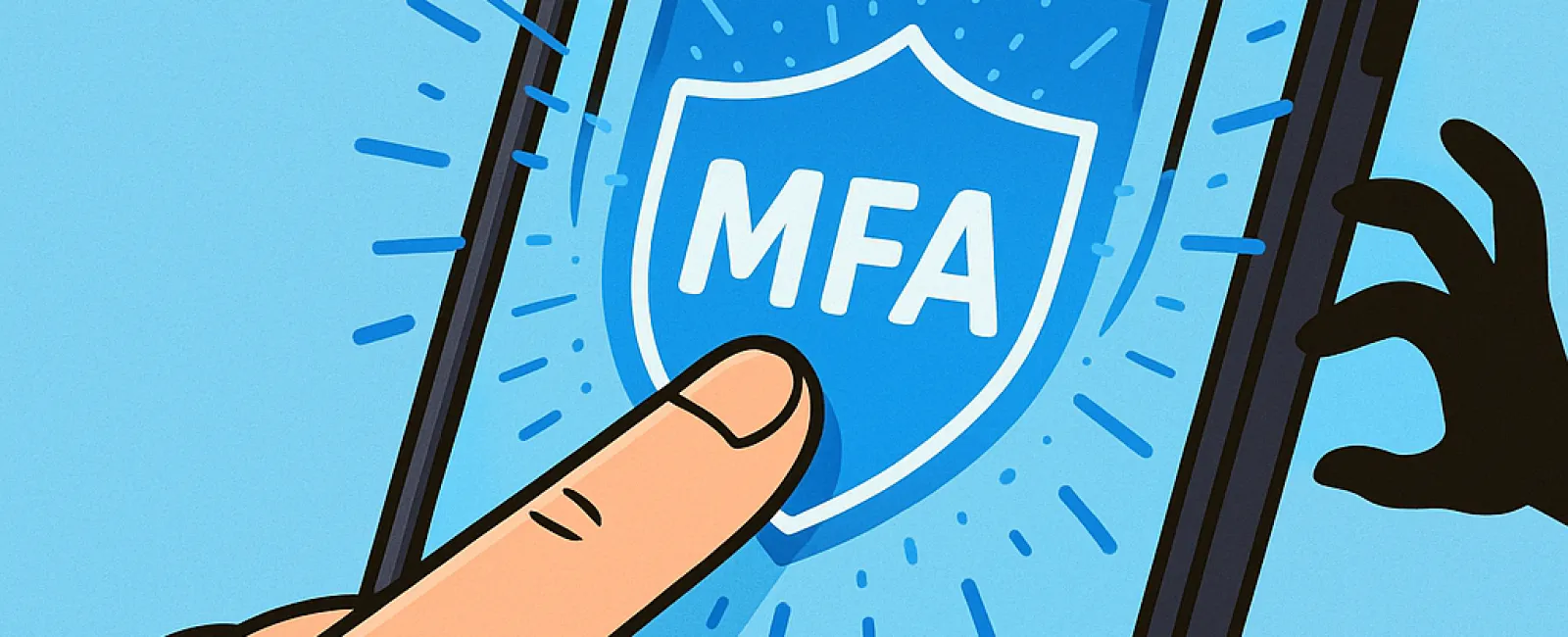October 27, 2025
Imagine going online without multifactor authentication (MFA) as risky as driving without a seatbelt or leaving your office unlocked at night. Why expose your digital world to such vulnerabilities?
MFA acts as a powerful second barrier to your online accounts. Instead of depending solely on passwords—which can be stolen, guessed, or phished—it demands an additional form of verification like a text message code, an authentication app, or even a fingerprint scan. This means that even if cybercriminals get hold of your password, their access is instantly blocked without that crucial second step.
Just One Extra Step Can Protect Everything
Think of your password as locking your front door at night. Now, MFA is like setting your security alarm before bed. It might seem optional, but isn't it reassuring to know your protection doubles if one layer fails?
MFA simply adds a swift additional check to confirm your identity when logging in. Whether called "two-step verification," "two-factor authentication," or a "one-time password," these methods ensure multiple layers guard your sensitive data before access is granted.
MFA can take many forms: confirmation emails during account creation, bank security questions, SMS codes, push notifications, or phone calls. Most of these require just a single tap or a quick code entry.
How MFA Defends You in Real-Life Scenarios
While MFA is effortless and fast for you—just approve a prompt or enter a code—it creates a significant roadblock for hackers. If someone tries accessing your account without authorization, MFA sends you an alert or a code request, warning you about a possible breach. This vital notification gives you the chance to secure your accounts before any data is stolen.
Even if a hacker deceives an employee into revealing credentials, MFA stops unauthorized entry dead in its tracks without the second verification. In fact, Microsoft research shows that activating MFA reduces the risk of account compromise by more than 99.2%, and over 99.99% when fully enabled.
Essential Places to Activate MFA — and How to Get Started
Ensure MFA is switched on for your most sensitive accounts, such as:
- Banking and financial services
- Email and cloud storage platforms
- Social media profiles
- Work-related logins containing client or confidential data
Activating MFA is straightforward with most major services offering built-in options. Choose the method that suits you best and integrate it into your daily routine. Using an authenticator app is a smart way to secure employee access.
In summary, enabling MFA is a quick and free safeguard that blocks the majority of hacking attempts. Spending just a few minutes to set it up today can save you months or even years of costly recovery from data breaches.
The simplest way to deploy MFA throughout your organization is by connecting with your IT provider. A seasoned Managed Service Provider (MSP) can streamline the process and provide expert guidance. Need a cybersecurity specialist? Click here or call us at (321) 221-2991 to schedule a Consult with our expert team now.



